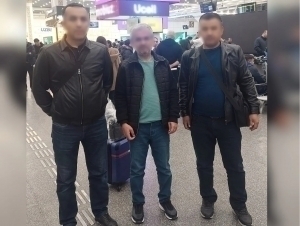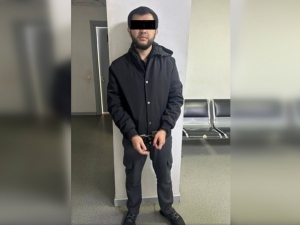Dead or Murdered? Mystery of the President's death
Review
−
30 May 28231 10 minutes
In many countries around the world, human life is a matter of great importance. When it comes to a president, the level of seriousness increases significantly. What if the president has a heart condition? Naturally, his life becomes a subject of constant monitoring and concern. He is surrounded by a team of qualified doctors ready to provide immediate assistance, a mobile medical facility at hand, access to professional clinics nearby, and even prepared routes or helicopters for emergency transport. When planning foreign trips, the protocol includes the identification of a hospital for the visiting head of state, down to the specific ward, months in advance.
Every second of a president’s life is under control. He cannot afford to be exhausted, engage in lengthy conversations, or be fed erratically. In short, the health and safety of president — protection from life-threatening situations — is treated as a matter of national security.
Turgut Özal, the eighth President of Turkey, who died in Ankara on April 17, 1993, shortly after returning from a visit to Central Asian countries including Uzbekistan, was no exception. Particularly after surviving an assassination attempt in 1988, ensuring his personal safety became a high priority. Yet, circumstances at the time of his death suggested otherwise. If everything had been in place, wouldn’t an ambulance have been waiting? Would he have been poisoned? Would he have died under such suspicious conditions?
Second head of State to die while in office
We will now delve into the details surrounding the death of Turgut Özal, whose mysterious passing has haunted Turkish society for 32 years and who remains a significant figure in the country's modern history.
Halil Turgut Özal was born on October 13, 1927, in Malatya. He was a Turkish bureaucrat, politician, and statesman, and served as the 8th President of the Republic of Turkey. He was Prime Minister and leader of the Motherland Party (ANAP) for five years and ten months, from 1983 to 1989. Özal was the second president of Turkey to die while in office, following the country’s founder, Mustafa Kemal Atatürk, who also passed away during his presidency.
Özal served as Advisor to the Prime Minister and Deputy Head of the State Planning Organization during the 43rd Government of Turkey. After the military coup on September 12, 1980, he was appointed Deputy Prime Minister for Economic Affairs in the government formed by Bülend Ulusu. He resigned from this position in 1982 and went on to establish the Motherland Party in 1983.
His party won 45.14% of the vote in the 1983 Turkish general elections, enabling him to form the 45th Turkish government as Prime Minister. In 1985, he was re-elected party chairman at the ANAP congress. Despite a drop in support during the 1987 general elections — falling to 36.31% — he was able to form the 46th Turkish government and remained Prime Minister.
In 1989, Özal was elected President of Turkey. Even after stepping down from the Prime Ministership, he continued to play a pivotal role in shaping the political landscape of the country.
Assassination and pardon of Özal
On Saturday, June 18, 1988, during the regular congress of the “Ona Vatan” party held at the Atatürk Sports Palace in Ankara, an assailant named Kartal Demirağ attempted to assassinate President Turgut Özal. The head of state survived, although he was injured. Demirağ fired twice from a distance of 12 meters in front of a platform designated for photojournalists and television cameras, wounding Özal in the right hand. In the chaos that followed, security guards opened fire indiscriminately, injuring 18 people — among them, Minister İmren Aykut.
Kartal Demirağ, who was initially sentenced to death, later had his sentence commuted to 20 years in prison. Surprisingly, he was eventually pardoned by none other than President Özal himself.
He ignored the doctors’ warnings
Turgut Özal’s heart problems began to appear as early as the 1970s — more than two decades before his death. In 1987, his worsening condition led him to seek treatment at the Methodist Hospital in the United States, where world-renowned heart surgeon Professor Michael Ellis DeBakey performed surgery on him.
The operation was declared successful. Dr. DeBakey even remarked that Özal could now “run like a young man” — provided that he adopted a healthy lifestyle, underwent regular medical checkups, and avoided putting strain on his heart. However, Özal ignored these warnings. He did not change his lifestyle after the surgery; he continued to work until midnight and rise before dawn. While others were asleep at 2 or 3 a.m., he would read the next day’s newspapers, rest briefly, and then start his day with the sunrise. He refused to rest, continued to consume unhealthy foods, and steadily gained weight.
12-day trip to Central Asia and Uzbekistan
In early April 1993, three days before his departure on a diplomatic tour of Central Asia, the head of Özal’s medical team advised him to undergo a complete medical examination. But the president dismissed the suggestion. Over the next 12 days, he visited Uzbekistan, Kyrgyzstan, Kazakhstan, Turkmenistan, and Azerbaijan — covering nearly 22 hours of flight time alone, not including time spent on his feet at events and ceremonies.
He spent 32 hours speaking in private meetings, official talks, and press conferences. Each country seemed to compete to host the most elaborate and ambitious itinerary. In Kyrgyzstan, Özal was even taken to inaugurate a regular school — an unusual activity for a head of state. The exhausting schedule began to take a visible toll: photographs captured him struggling to walk, and in one instance, being carried down stairs by guards holding him under his arms.
In Bukhara, Uzbekistan, journalists observed from a distance as Özal struggled to sit and stand at the Bahauddin Naqshband shrine, using his hands to support himself during prayer. By the time he arrived in Turkmenistan, his fatigue had become obvious in both his appearance and his speech. He tried to reduce the intensity of the remaining program but could not do so in Turkmenistan. He succeeded, however, in shortening the final stop in Azerbaijan to just three hours, and returned to Turkey on April 15.
President was living the last 24 hours of his life
April 16, 1993 – 10:30 a.m. Despite returning from an exhausting 12-day trip the night before, Özal resumed his duties without rest. That morning, he went to the Constitutional Court, skipping the full medical examination his doctors had urged him to undergo before the trip. His heart, already under strain, was now pushing through the final 24 hours of his life.
At 2:00 p.m., President Özal received Prime Minister Süleyman Demirel at his residence. This would be the last meeting between the two long-time political colleagues and rivals, closing a relationship that spanned 40 years.
At 3:00 p.m., he received the Director-General of UNESCO.
Still not finished for the day, at 6:15 p.m. he attended the opening of an art exhibition by a sculptor. There, he delivered a speech. He appeared visibly exhausted, both in his expression and behavior. This exhibition would be the last public event he ever attended.
At 7:30 p.m., Özal returned home.
Despite his overwhelming fatigue, the president’s schedule for the next day remained full, with no time allocated for medical rest or examination. But fate had other plans. Life had prepared entirely different events for him.
President’s last breath
Saturday, April 17, 1993. Turgut Özal, as usual, found it hard to face the sun. He woke up to the footsteps of guards outside his residence but felt overwhelmingly tired and couldn’t get out of bed immediately. At 10:00 a.m., he lifted his head from the pillow. Less than five minutes later, he went to the bathroom for a shower. Afterward, he made the most dangerous decision of his life: he stepped onto the treadmill and pressed the “START” button. It was then he unknowingly took his last steps. At 10:35 a.m., after walking 650 steps, he stopped the device, sat on the edge of the bed, bent over, took off his shoes, and called out to his wife: “Semra, prepare a loose shirt for me.” Those would be his final words.
Meanwhile, Mrs. Semra Özal was waiting for him at the breakfast table and had told the servants to cook eggs for the President. When he didn’t arrive, she went to check on him and found him unconscious in the bedroom.
Outside, the motorcade, driver, and guards—tasked primarily with protecting him from assassination attempts—were unaware of the crisis inside. The vital blow had already pierced Özal’s heart, but silence reigned. More alarmingly, there was no emergency plan, no designated doctors, no prepared response for such a situation involving the head of state or his family members.
President was already dead
Although 17 minutes had passed since Özal’s heart attack, no effective measures had been taken to save him. Witnesses at the residence—including guards and servants—noted how the President’s complexion grew pale, his limbs turned cold, and his vital signs faded.
Eventually, someone remembered the telephone in the residence and called Özal’s doctor, who dispatched an ambulance. The doctor’s home was only a 7-10 minute walk away from the Presidential Residence, yet instead of coming to the house, the doctor insisted on transporting the patient to the hospital.
At 11:00 a.m., the ambulance left the residence, siren blaring, speeding toward the hospital. The people of Ankara continued their daily routines, unaware that the President’s cold body was inside the ambulance. However, there was neither a doctor nor a nurse accompanying him.
Where to take him? The ambulance driver didn’t know either. To save time, he changed the route at 11:10 and headed to the nearest hospital, arriving at 11:15. By then, 40 minutes had passed since the heart attack.
Is the patient Özal or President Özal?
Confusion continued after the hospital was informed that President Turgut Özal was coming. Yet no one was sure in what condition. Hospital staff were unprepared—rather than readying for a critical emergency, they treated the news as a routine visit, focusing on appearances rather than urgent care.
Within seconds of arrival, doctors began first aid efforts. They worked for 10 minutes, but when no signs of life appeared, he was moved to the cardiovascular intensive care unit. It was too late. Though they continued to use the most advanced equipment of the time, hoping for a miracle, it never came.
After three and a half hours of attempts, at 2:30 p.m., Turgut Özal was officially pronounced dead. His body was draped in the Turkish flag and taken from the hospital morgue in a coffin. He was buried in Istanbul, as per his will. The country declared three days of mourning.
His grave opened; poisoning discovered
Rumors that Özal had been assassinated or poisoned grew stronger over the years. His widow, Semra Özal, claimed her husband was poisoned, alleging arsenic had been added to his lemonade. She cited a hair sample analysis performed in the United States as evidence.
Nineteen years after his death, on October 2, 2012, Turgut Özal’s grave was opened for an autopsy. Forensic Medical Examination Institute researchers found poison in his remains. However, they could not conclusively determine whether the poison caused his death or if it had been administered at a later time.
In a statement, Semra Özal said:
“Following the claims about the cause of death, the grave was reopened and analyzed. Unfortunately, poison was found, but it is unknown how and by whom it was administered. This issue remains unresolved.”




